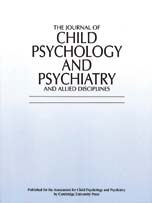No CrossRef data available.
The Differential Assessment of Children's Attention: The Test of Everyday Attention for Children (TEA-Ch), Normative Sample and ADHD Performance
Published online by Cambridge University Press: 23 January 2002
Abstract
“Attention” is not a unitary brain process. Evidence from adult studies indicates that distinct neuroanatomical networks perform specific attentional operations and that these are vulnerable to selective damage. Accordingly, characterising attentional disorders requires the use of a variety of tasks that differentially challenge these systems. Here we describe a novel battery, the Test of Everyday Attention for Children (TEA-Ch), comprising nine subtests adapted from the adult literature. The performance of 293 healthy children between the ages of 6 and 16 is described together with the relationships to IQ, existing measures of attention, and scholastic attainment. This large normative sample also allows us to test the fit of the adult model of functionally separable attention systems to the observed patterns of variance in children's performance. A Structural Equation Modelling approach supports this view. A three-factor model of sustained and selective attention and higher-level “executive” control formed a good fit to the data, even in the youngest children. A single factor model was rejected.
There are behavioural and anatomical grounds to believe that Attention Deficit Disorder (ADD) is particularly associated with poor self-sustained attention and behavioural control. The TEA-Ch performance of 24 boys diagnosed with ADD presented here is consistent with this view. When performance levels on WISC-III subtests were taken into account, specific deficits in sustained attention were apparent while selective attention performance was within the normal range.
- Type
- Research Article
- Information
- The Journal of Child Psychology and Psychiatry and Allied Disciplines , Volume 42 , Issue 8 , November 2001 , pp. 1065 - 1081
- Copyright
- © 2001 Association for Child Psychology and Psychiatry


